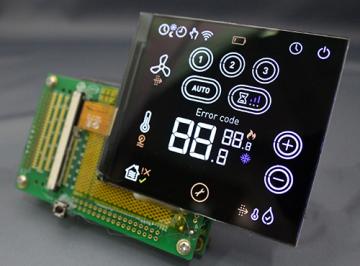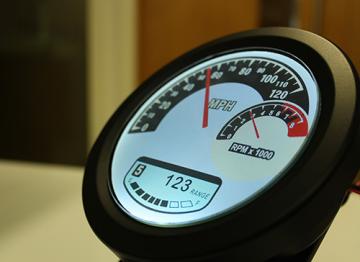EMC Compliance in Medical Device Design
Oct 24, 2025Explore why EMC compliance is critical for safe, reliable medical devices. Discover how Anders integrates Design…
Read moreThe influence the fast-paced consumer market is having on industrial design, means the types of displays we encounter every day, both monochrome and colour displays, continue to evolve and improve to deliver better user experiences and more efficient and reliable performance.
Careful selection of the right display for your application requires considering factors such as BOM cost, software complexity, power, environment, as well as the user experience you want to deliver. Getting it right can create a product that fits perfectly in its market window, yet really stands out against the competition.
Colourful is beautiful, right? However, an artfully designed user interface hosted on a monochrome display can be clear, simple, easy to understand and respond quickly to the user’s demands – isn’t that what is needed in today’s fast paced digital world? Technically, the humble monochrome display boasts low power consumption, small form factors, easy software design, and low cost, relative to full-colour alternatives.
Traditional technologies such as STN and its derivatives such as Double or Advanced STN (DSTN, ASTN) have seen some advanced and can prove an excellent choice, particularly in the industrial, metering and medical sectors.
For a sharper alternative, consideration should definitely be made to a Vertical Alignment (VA) display. These benefit from inherently high contrast and a deep black background, and can be used with a backlight of almost any colour – like cool white for crispness and clarity of user interfaces in a darker environment, or a vibrant primary colour for attention-grabbing or mood-setting. With clever use of optical filters or special backlight design, you can provide even stronger impact using selective colour, such as highlighting a warning symbol. With a little creative thinking, VA displays can deliver an engaging and rewarding user experience at lower power and cost than a full-colour TFT-LCD.

A more recent technological alternative is the Passive-Matrix OLED (PMOLED). Backlight-free, and extremely thin, these are compact, neat and flexible making them ideal for applications like wearables, smart store-shelves, or control panels for small domestic appliances or industrial equipment. Although high brightness requires a large applied voltage, powering an OLED requires much less energy than the LED or CCFL backlight of a STN display.
Although clever design with monochrome can deliver powerful user experiences at relatively low cost, the smartphone revolution has taught many of us to expect sharp, colourful images and high-quality graphics any time we interact with technology in the home, car, or workplace. The product you are designing right now has a lot to live up to.
Depending on factors like cost and power consumption, a colour graphical display may be the best way to increase perceived value and stay ahead of your competitors. Consideration has to go into the processing system to make sure it can handle the graphics and more complex driver software of the display you want to use.

Today’s strongest colour display technologies are TFT-LCD types or Active-Matrix Organic LEDs (AMOLEDs). TFT-LCDs are available in sizes from about 1 to 21-inch, with typical contrast ratio of about 400:1 and maximum viewing angles of 60°-70°. With standard TFT-LCDs, viewers may experience contrast inversions (birefringence), changes in brightness, or colour shifts at the widest angles. However, advances in TFT technology including In-Plane Switching (IPS), aka Super TFT displays have overcome these viewing limitations with angles as wide as 90°.
Active-Matrix OLED (AMOLED) displays– as increasingly seen on today’s high-end smartphones – now offer a high-performing alternative in industrial or medical applications. Key strengths include low power consumption and a wide operating temperature range. This can allow the display to remain active and always ready for use, while simplifying thermal management and enabling equipment to be used in harsh environments such as outdoors or in a hot factory environment. Their clever construction also means that appear brighter – for the same luminance figures as a TFT – AMOLEDs appear 50% brighter – great for your power budget! Like PMOLEDs, they can be fabricated on flexible substrates, giving designers the option to create curved displays or surface-mounted displays that save the cost and complexity of creating an aperture.
So, is a colour or monochrome LCD display better - Monochrome are lower cost, lower power consumption, come in small form factors with easy software design whereas colour alternatives are generally more expensive but offer sharp colourful images and high performing graphics - what you choose very much depends on the what you are trying to display and the budget you have available.
At Anders, we can help you get the best display solution – whether monochrome or colour – meeting all your specifications, cost-effectively and quickly. Our proven processes make custom design, development, and manufacturing faster and more economical than you might think, and ensure consistent quality as well as reliable delivery. Take a look at how we approach every new project that lands on our desks - from the bottom up.
Contact our team today to start focusing your search for a solution.
Here are some popular Mono and TFT displays